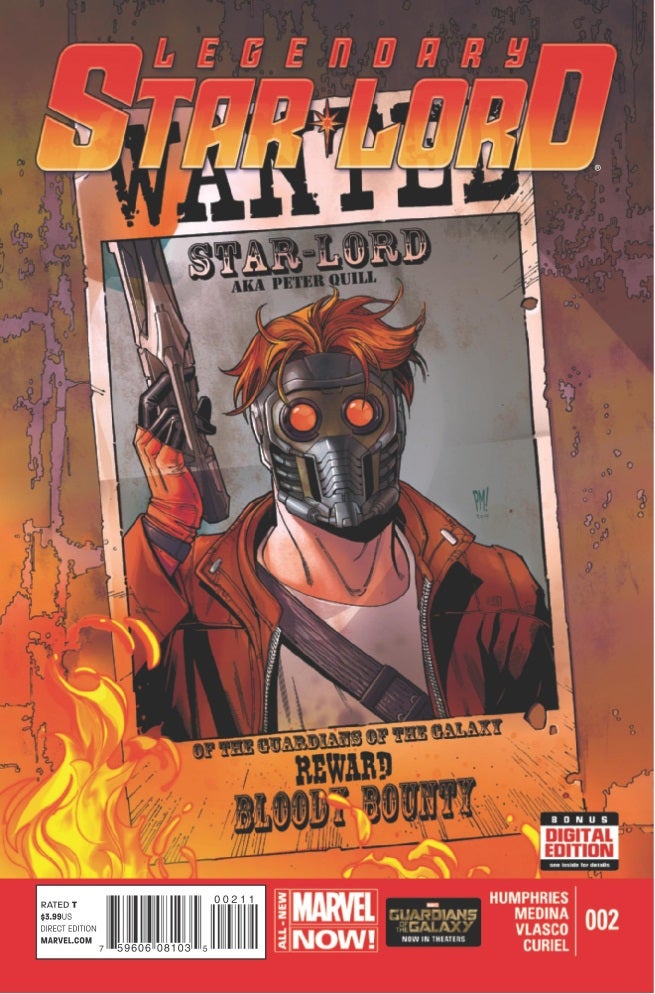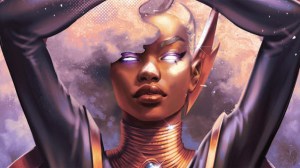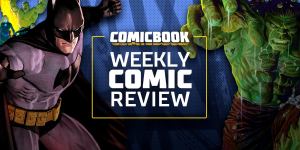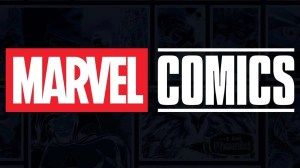
The Legendary Star-Lord #2 is a comic that accomplishes exactly what it intends to, presenting Peter Quill as a roguish hero traipsing through adventures across space. Although not a perfect comic, it manages to succeed in its own goals.
Videos by ComicBook.com
The book is at its best when dealing with Peter, the legendary Star-Lord, directly. Sam Humphries offers him as a mix of Harrison Ford’s best-known roles: Indiana Jones and Han Solo. Like both of these characters, he is shown to be a swaggering rogue with a slightly deluded self-image. It’s a fun archetype that when used well creates characters that stick in the public consciousness. It won’t be surprising if Chris Pratt is forever remembered for his portrayal of the hero in the newly launched Guardians of the Galaxy franchise.
Star-Lord is far from perfect though and his charm and skills only get him so far. That’s what makes the adventure in this comic function. His occasional bumbling or lack of advantages provides a sense of real risk when the action starts. Humphries sets up challenges early in the issue that make the action at the end feel exciting and natural. Unlike some headlining heroes who are perceived to be invulnerable due to their abilities, Star-Lord’s accomplishments are a mix of skill and luck.
Paco Medina and Juan Vlasco, on pencils and inks respectively, may be the real heroes of the action sequences in Star-Lord #2 though. They do an excellent job of establishing geography and characters so that the sequences make sense. Every action, reaction, and new element fit within the landscape they create, so readers are aware of what is happening. It’s easy for an action sequence with five or more characters to lose track of the many moving pieces, but Medina and Vlasco make every moment clear. This ensures that the drama and stakes at the end of this issue are as dramatic for readers as the characters involved.
They provide good work to smaller scenes as well with plenty of images to chew on during conversations. David Curiel’s work on colors also helps with the more subtle transitions. Flashback scenes are made clear without the need for text (although it is still provided) through his changing palette. Medina and Vlasco’s costumes designs, specifically one on the very last page, are notable for being interesting without containing too many elements to function. A key villain with a silly name will work purely because of the great way his costume inverts Star-Lord’s.
The comic tends to weaken the further the focus is pulled from Star-Lord though. His half-sister Victoria, introduced in the previous issue, is portrayed primarily through her relationship to Star-Lord. Exposition exposes what seems like an extraordinary back-story, but it only exists in dialogue. The adventure of this comic is primarily Star-Lord’s. When Victoria is making a dramatic decision, it is presented purely in the terms of what Star-Lord has said, not through her own desires and goals. We can hope to see more of her in the future, but for now this comic is Star-Lord’s and everyone else is just lucky to be there.
Although some characters receive short shrift, the brevity found in each issue of Legendary Star-Lord so far is its own reward. There are threads to a larger story being woven, but there is a complete tale to be found in this second issue. Readers who dislike the decompression found in many Marvel comics will enjoy the self-contained adventure here.
That is ultimately the thing that Legendary Star-Lord #2 wants to accomplish. It presents itself as a self-contained space adventure and succeeds in telling that story. As a quirky blend of sci-fi and super heroics, it gets the job done.




